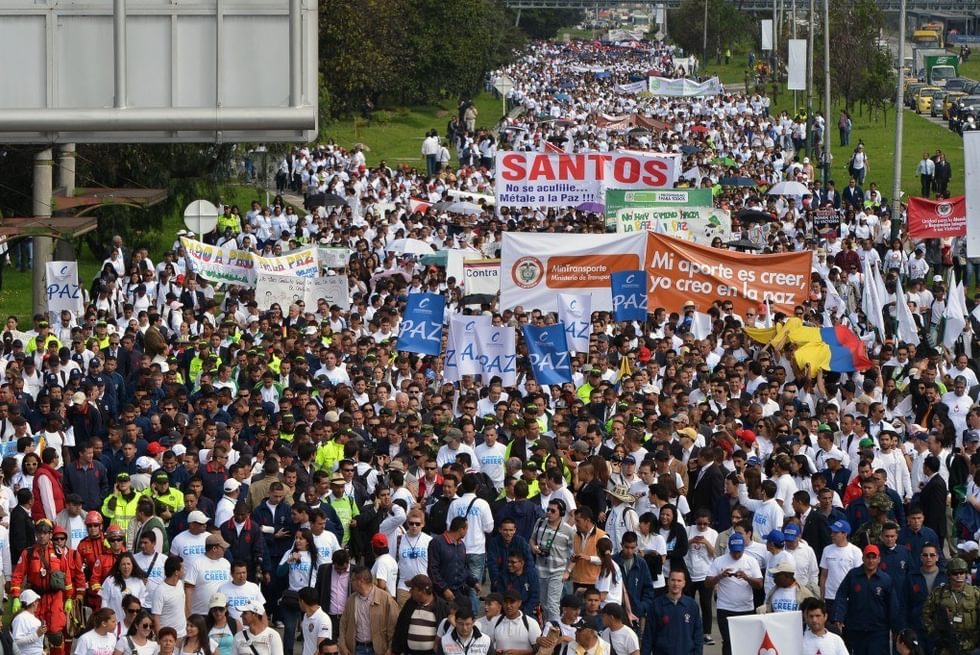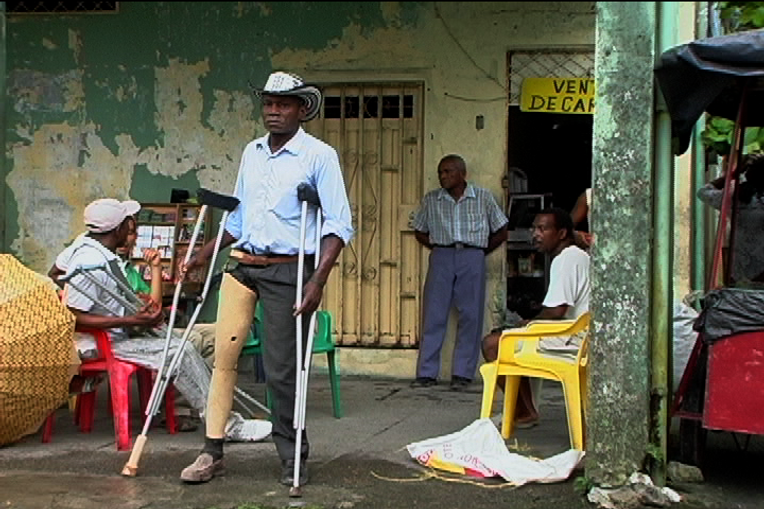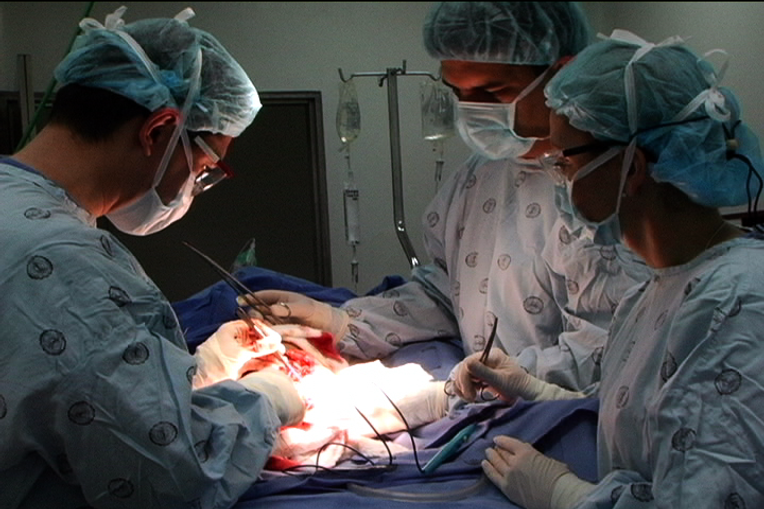Scenes from Colombian Minefields
From the Series: The Colombian Peace Process: A Possibility in Spite of Itself
From the Series: The Colombian Peace Process: A Possibility in Spite of Itself

Colombia is one of the most landmine-affected countries in the world. This is one of the legacies of a multisided war in which the military, paramilitary groups, and leftist guerillas like the Fuerzas Armadas Revolucionarias de Colombia (FARC) and the Ejército de Liberación Nacional (ELN) clash over political power, territory, access to natural resources, and influence in the lucrative narcotics trade. From 2004–2009, I conducted ethnographic research in Colombia with people who strive to rehabilitate themselves and others after a landmine injury. At the heart of this research is an examination of the implications of a new concept of rehabilitation—one that focuses on repair and insists on achieving full and even enhanced human capacity. In the process of conducting research, I also made a film called “Bodies at War.” The following presents two scenes with an accompanying reflection.

It is a rainy day in Quibdó, Colombia, one of the wettest places on earth. Roberto Serna, an elderly Afro-Colombian man, sits in front of a small bodega. As he speaks, he is unwrapping a large object packaged in a black garbage bag bound by twine. “I’m not using this leg. I want to take it to Bogotá so they can fix it, because this leg is bad. You are going to see how uncomfortable this thing is.” As he explains how Colombia’s oligarchy takes valuable resources and leaves workers dispossessed and in dire conditions, Mr. Serna continues to unwrap the object until he reveals a large and heavy wooden leg. “Look at this thing,” he exclaims. “What am I supposed to do with this? Ha. This thing is heavy.” Mr. Serna pulls the wooden leg to his body, places his sombrero vueltiao on his head, and hops up. He places his small residual limb into the hefty leg and buckles a leather harness belt around his waist. He then stands in front of the bodega donning the leg while he poses for the camera. Mr. Serna has lost his farmland and the means of his subsistence. He carries the weighty burden of the conflict symbolically and literally in a wooden leg that he complains is uncomfortable and too heavy to wear.

The anesthetized soldier’s body and face are draped in blue sheets; only his leg emerges from the blue covering. The resident washes the residual limb with an iodine solution that suds up and mixes with blood and then wipes the limb clean. The nurse dresses the surgeon in his gown and gloves. For the next three hours, the surgical team irrigates the amputation site with a forceful spout of water. They remove dead tissue with a laser that sends up a smell of burning flesh, wisps of smoke, and an acute, high-pitched buzzing sound. They carefully shape muscular flaps that neatly pull over the flesh and cushion the severed tibia. They pull and cut nerves. Finally, they stitch the muscle flaps and skin, creating a rounded stump with a drainage tube poking out. Three months later, the soldier receives a modular prosthetic limb made of lightweight and flexible carbon fibers, plastic, and aluminum.
In Colombia, soldiers receive the best medical care available; civilians do not. In scene one, the farmer occupies the position of the racialized other who is invisible within the state apparatus and ironically made victim through humanitarian aid that provides a weighty leg he cannot walk with. The soldier in scene two is the anesthetized patient-made-object through the surgical shaping of his body. He emerges from his anesthetized state as a repairable citizen-subject who dons a flexible, lightweight modular limb.
In the aftermath of Colombian neoliberal reforms of the 1990s, humanitarian and medical interventions too often reproduce social hierarchies based on race, gender, and military status. As Colombia moves towards a peace treaty and post-conflict resolutions, negotiators must acknowledge not only the existence of an armed conflict, but also the socioeconomic disparities that fuel warfare and civil conflict within Colombia. Reparation is a fantasy, and fantasies are fragile. Healing can only begin when insidious everyday violence based on disparities in healthcare, economic stability, and gender come to the center of national discourse. To the extent that these longstanding inequalities go under-acknowledged, lasting peace will remain elusive in Colombia.